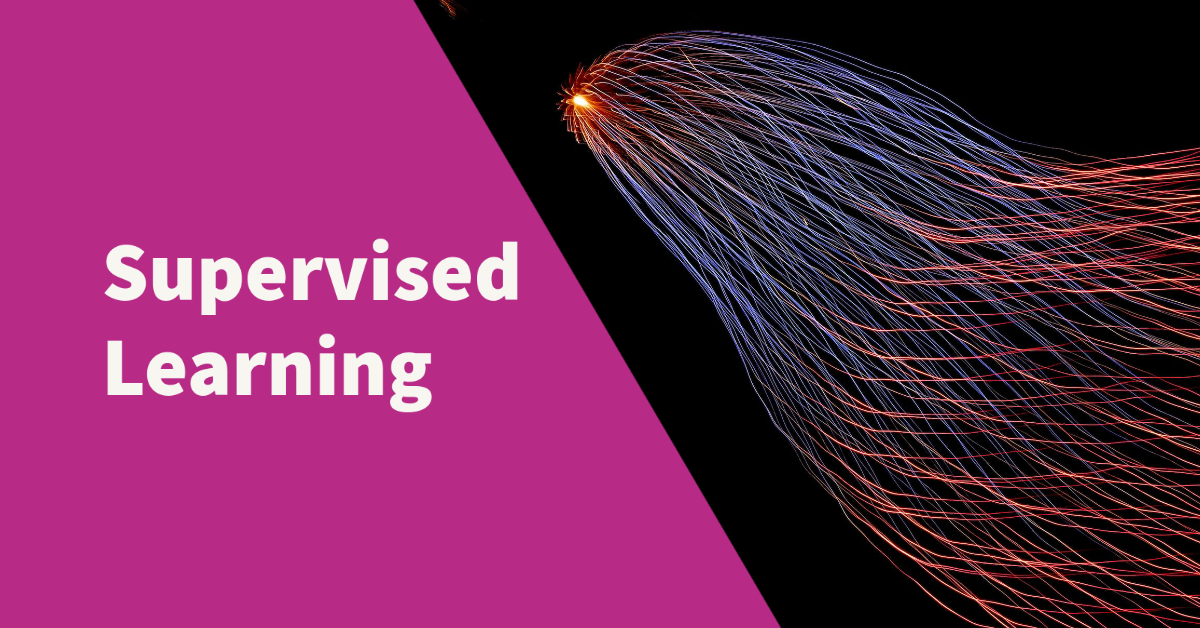Unleash the Power of Supervised Learning: A Beginner’s Guide to the Fundamentals and Applications

Supervised learning is a type of machine learning in which a model is trained on labeled data, where the correct output is provided for each example in the training set. The model learns to predict the correct output for new, unseen data by learning the relationship between the input features and the output labels.
How does supervised learning differ from other types of machine learning?
There are several other types of machine learning, including unsupervised learning, semi-supervised learning, and reinforcement learning. In unsupervised learning, the model is trained on unlabeled data and must discover the underlying structure of the data through patterns and relationships.
In semi-supervised learning, the model is trained on a dataset that is partially labeled and partially unlabeled. In reinforcement learning, the model is trained to make a sequence of decisions in an environment in order to maximize a reward.
Supervised learning differs from these other types of machine learning in that it requires labeled data and focuses on predicting a specific output given a set of input features. This makes it particularly useful for tasks where the correct output is well-defined and easy to measure, such as image classification or predictive modeling.
Why is supervised learning important?
Supervised learning is an important tool for automating tasks and making predictions in a wide range of applications. It has the potential to improve efficiency and accuracy in many industries, including healthcare, finance, and retail. It is also a well-understood and widely-used approach in machine learning, making it a good starting point for those new to the field.
Fundamentals of Supervised Learning:
How does a supervised learning model work?
A supervised learning model consists of an algorithm that is trained on a labeled dataset. The algorithm uses the labeled examples in the dataset to learn the relationship between the input features and the output labels. Once the model is trained, it can then be applied to new, unseen data to make predictions.
For example, a supervised learning model could be trained to predict whether a customer will churn (stop using a product or service) based on their past behavior. The model would learn from a dataset of labeled examples of churning and non-churning customers, and use this information to make predictions for new customers.
What are input features and output labels in supervised learning?
Input features are the characteristics or attributes of the data that the model uses to make predictions. In the example above, the input features might include the customer’s age, location, and average spending.
Output labels are the target values that the model is trying to predict. In the example above, the output label would be whether the customer churns or not.
Applications of Supervised Learning:
Image classification
One common application of supervised learning is image classification, where a model is trained to recognize and classify different objects or scenes in an image. For example, a machine learning model could be trained to classify whether an image contains a cat, a dog, or a bird.
Image classification is used in a wide range of applications, including object recognition in self-driving cars, automated identification of wildlife in camera trap images, and automatic tagging of images on social media platforms.
Natural language processing
Another common application of supervised learning is natural language processing (NLP), which involves using machine learning to process and understand human language. NLP tasks can include language translation, sentiment analysis, and question answering.
Supervised learning is often used in NLP, as it requires the ability to predict a specific output (such as a translation or a sentiment label) given a set of input features (such as words or phrases).
Predictive modeling
Predictive modeling involves using machine learning to make predictions about future events or outcomes. Supervised learning is often used in predictive modeling, as it allows a model to learn the relationship between input features and an output label in order to make predictions for new, unseen data.
Predictive modeling is used in a wide range of applications, including predicting customer churn, forecasting demand for a product, and identifying credit risk.
Fraud detection
Fraud detection is the process of identifying fraudulent or suspicious activity within a dataset. It is often used in financial transactions, such as credit card transactions or insurance claims, to identify fraudulent activity and prevent financial loss.
In the context of machine learning, fraud detection involves training a model on a labeled dataset of fraudulent and non-fraudulent transactions. The model learns to identify patterns or anomalies in the data that may indicate fraudulent activity. Once trained, the model can then be applied to new, unseen data to identify potentially fraudulent transactions.
Advantages and Limitations of Supervised Learning:
Advantages:
- High accuracy: Supervised learning algorithms can achieve high accuracy on many tasks, particularly when they are trained on a large and diverse dataset.
- Can handle complex relationships: Supervised learning algorithms are able to learn complex relationships between input features and output labels, allowing them to make accurate predictions even when the data is highly nonlinear.
- Well-understood: Supervised learning algorithms are well-understood and widely used, making them a reliable choice for many tasks.
Limitations:
- Requires labeled data: Supervised learning requires a labeled dataset in order to learn the relationship between input features and output labels. This can be a disadvantage if labeled data is scarce or expensive to obtain.
- May be affected by bias in the data: Supervised learning algorithms can be affected by bias in the training data, which can result in biased or inaccurate predictions. It is important to carefully examine the training data and ensure that it is representative of the real-world problem in order to avoid this issue.
Conclusion
In summary, supervised learning is a powerful tool for automating tasks and making predictions in a wide range of applications. It involves training a model on labeled data, allowing it to learn the relationship between input features and output labels.
Supervised learning has the potential to improve efficiency and accuracy in many industries, but it requires labeled data and may be affected by bias in the data. Improving the performance of a supervised learning model involves selecting appropriate features, tuning model hyperparameters, handling overfitting and underfitting, and incorporating domain knowledge.
As machine learning continues to advance, it is likely that the role of supervised learning will continue to grow and evolve.





